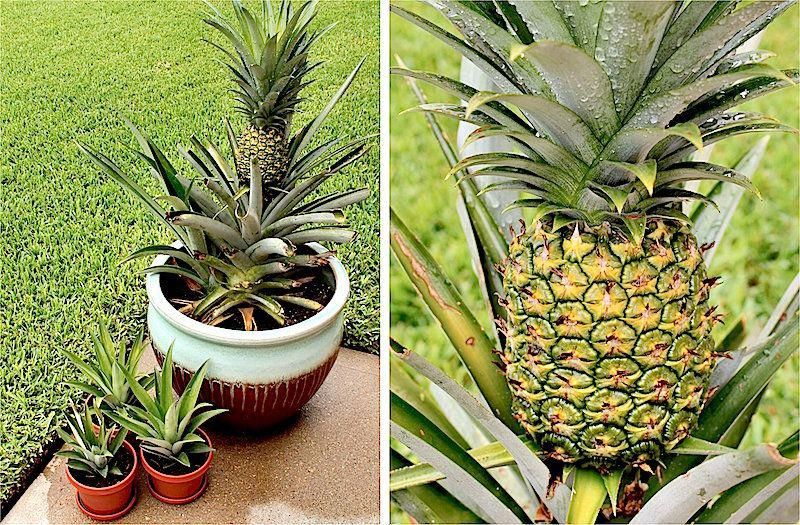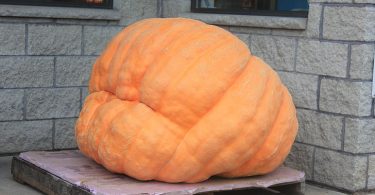The crop requires areas where the climate is warm, humid and free from extreme temperatures (25 °C being optimal). These areas have a great potential for pineapple production.
There are 5 major pineapple groups grown throughout the world. Two of these, Cayenne and Queen, are widely cultivated in South Africa.
Cayenne and Queen Cultivars
The Smooth Cayenne cultivar is used for both canning (75 % of which is exported) and as fresh fruit. The Queen, because of its high sugar content and unsuitable canning qualities, is cultivated only for fresh consumption. However, because production of the Queen pineapple is more costly, fresh consumption is shifting towards the Cayenne.
Cayenne plants and the fruit are normally larger than that of the Queen, with succulent yellow fruit. Queen fruit has a golden yellow colour and is less juicy.
Planting Requirements
Pineapples can be grown in a variety of soil types but prefer mildly acid soils (pH 5,5_6,5). However, there are certain requirements for successful pineapple production, which include:
Preparing the soil
- Remove trees, stumps and stones
- Subsoil (rip) to a depth of 800 to 900 mm under dry conditions
- Disc, plough and till the soil a number of times, to achieve a fine tilth, for effective plant rooting
- Ridge the soil for better drainage, temperature and to improve aeration
- Have soil samples analysed at least 6 months before planting to determine fertilisation and fumigation requirements
Planting material
Unlike many other crops grown from seed, pineapples are grown by planting various parts of the plant according to the cultivar, where it is going to be produced, and the cultivation methods practised in the area.
Although crowns are mostly used as planting material for the Cayenne cultivar, they are considered uneconomical for the Queen cultivar because of the length of time they take to bear.
Suckers are planted in the case of Queen pineapple production. Slips bear sooner than crowns but they require a great deal of labour (to break them out and to remove the small fruit attached to their bases). Stumps are generally used when no other planting material is available.
Planting time
Plant pineapples between July and December.
Why?
- For rapid growth and uniform stand
- The temperature during this time ranges from satisfactory to ideal
Do not plant between February and April.
Why?
- Temperatures become progressively lower
- Retarded growth, poor and uneven stand
Farm planning, selection of soils and land layout
Consider the following factors when designing the layout of the land where you are going to plant pineapples as they will have an effect on production:
- Climate—is it warm, humid and frost free? The occurrence and intensity of rainfall should also be considered
- Soil type—clayey loams or sandy soils are ideal for planting
- Natural obstacles—rocky outcrops and vleis
- Soil conservation—unprepared soil usually results in poor plant uniformity, root development and weed control
- Position of windbreaks—to protect soil and crops
- Topography—gentle slopes will require a layout different from that for steep slopes. Steep slopes are more difficult to manage and cultivate (more powerful machinery is required)
The aims in the layout of a pineapple land are to:
– control water runoff and thereby limit soil erosion
– facilitate good drainage and prevent root and heart rot
– uniform distribution of sunlight to all plants
– have roads allowing machinery easy access to the pineapple plants (to expedite harvesting and spraying)
Planting
Planting is done by hand, with or without the aid of a planting machine. Use of the latter results in uniform, neat plantations.
Plant spacing
Spacing from ridge centre to ridge centre: 1,5 m.
Each ridge must carry a double row of plants.
Spacing between rows should be 600 mm.
Spacing between the plants in the row: 300 mm.
1,5 m Spacing from ridge centre to ridge centre
600 mm Spacing between rows
300 mm Spacing between plants in the row
Weed Control
For the control of most broad-leaved weeds and annual grasses, contact herbicides can be used.
Apply pre-emergence herbicides immediately after planting the pineapples, before root development and weed emergence.
The herbicide should be applied according to the type of soil:
Initial weedkiller application (spray)
– 3-5 kg bromacil/ha: low rate for sandy soils
– 3-5 l diuron/ha: low rate for sandy soils
– 5-6 l atrazine/ha: where euphorbia is a problem
– 3-4 l ametryn/ha: if weeds are already present
Booster applications (at 12 months interval)
– 2 l diuron/ha
– 2 kg bromacil/ha: at grower’s discretion
– 4-6 l atrazine/ha: if euphorbia is present
– 3-4 l ametryn/ha: if weeds are already present
Pest and Disease Control
Effective control measures are available for the most important pests and diseases. Pesticides used to control soil pests and diseases should be incorporated into the soil before ridging, with booster applications if required.
Pests above the soil level are usually controlled by spraying with a foliar pesticide during the period when the pests are most active.
Always read the label on the pesticide containers.
Why?
- To know if pH sensitive or biodegradable, i.e. whether it breaks down rapidly in direct sunlight
- To find out how to get the desired control with minimum impact on the environment
- For the safety of workers
Fertilisation
Use the following fertilisers :
| Hand applied fertiliser: | ammonium sulphate 100 N (sulphate of ammonia)—10 pockets/ha |
| Phosphate: | drilled into the ridges 0-300 kg/ha (Saaifos and zinc) |
| Potassium: | broadcast before ridging 0-400 kg/ha (potassium chloride) |
| Mixture: | drilled/broadcast 0-600 kg/ha (0:1:6 + Mg/Zn) |
Forcing agents
With the use of forcing agents, the pineapples can be made to bear fruit at virtually any time of the year.
Why?
- It initiates flowering, shortens crop cycle and increases yield
- It ensures uniform, complete and concentrated cropping
Fruit colouring or yellowing
Fruiting agents can also be applied to colour fruit, by spraying or brushing onto fruit. This ensures uniform colouring of the fruit in a plantation.
Irrigation
The pineapple plant is able to utilise rainwater and even dew very effectively. Therefore, the heavy dew that occurs in the coastal regions is so valuable to pineapples that irrigation may not even be necessary. Supplementary irrigation could, however, sometimes be essential and of great value.
Harvesting
Harvesting should be done 7 to 14 days after yellowing. It is labour intensive because workers walk in the space between ridges to pick the fruit by hand, loading it into baskets, or onto a boom harvester.
After harvesting the crowns are broken off (not twisted) and left on top of the plants in the field or are placed in bags to be collected at a later date for planting.
Make sure that the fruit is not too green or too ripe when harvested, not bruised or damaged and that it is not affected to a large extent by any physiological problems.
Source : http://www.nda.agric.za
Source : https://gardener-pro-ok.blogspot.com






